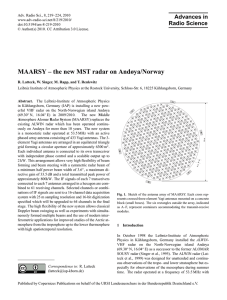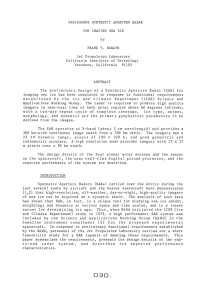THE LOGBOOK
advertisement
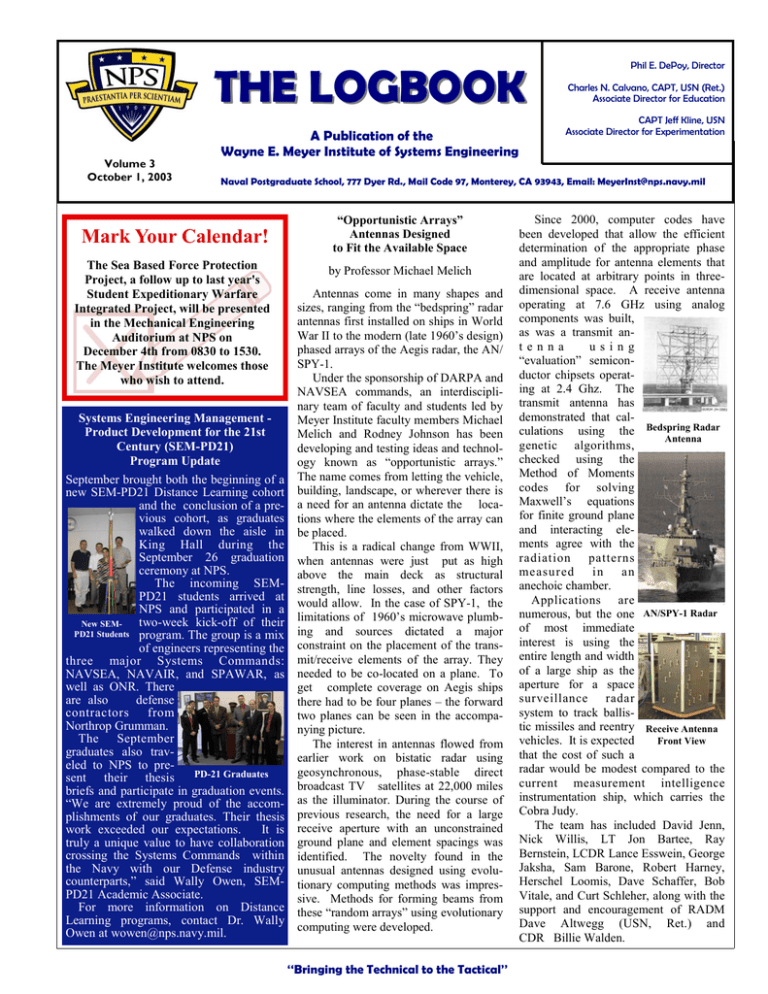
THE LOGBOOK Volume 3 October 1, 2003 A Publication of the Wayne E. Meyer Institute of Systems Engineering Phil E. DePoy, Director Charles N. Calvano, CAPT, USN (Ret.) Associate Director for Education CAPT Jeff Kline, USN Associate Director for Experimentation Naval Postgraduate School, 777 Dyer Rd., Mail Code 97, Monterey, CA 93943, Email: MeyerInst@nps.navy.mil Mark Your Calendar! The Sea Based Force Protection Project, a follow up to last year's Student Expeditionary Warfare Integrated Project, will be presented in the Mechanical Engineering Auditorium at NPS on December 4th from 0830 to 1530. The Meyer Institute welcomes those who wish to attend. Systems Engineering Management Product Development for the 21st Century (SEM-PD21) Program Update September brought both the beginning of a new SEM-PD21 Distance Learning cohort and the conclusion of a previous cohort, as graduates walked down the aisle in King Hall during the September 26 graduation ceremony at NPS. The incoming SEMPD21 students arrived at NPS and participated in a two-week kick-off of their New SEMPD21 Students program. The group is a mix of engineers representing the three major Systems Commands: NAVSEA, NAVAIR, and SPAWAR, as well as ONR. There are also defense contractors from Northrop Grumman. The September graduates also traveled to NPS to prePD-21 Graduates sent their thesis briefs and participate in graduation events. “We are extremely proud of the accomplishments of our graduates. Their thesis work exceeded our expectations. It is truly a unique value to have collaboration crossing the Systems Commands within the Navy with our Defense industry counterparts,” said Wally Owen, SEMPD21 Academic Associate. For more information on Distance Learning programs, contact Dr. Wally Owen at wowen@nps.navy.mil. “Opportunistic Arrays” Antennas Designed to Fit the Available Space by Professor Michael Melich Antennas come in many shapes and sizes, ranging from the “bedspring” radar antennas first installed on ships in World War II to the modern (late 1960’s design) phased arrays of the Aegis radar, the AN/ SPY-1. Under the sponsorship of DARPA and NAVSEA commands, an interdisciplinary team of faculty and students led by Meyer Institute faculty members Michael Melich and Rodney Johnson has been developing and testing ideas and technology known as “opportunistic arrays.” The name comes from letting the vehicle, building, landscape, or wherever there is a need for an antenna dictate the locations where the elements of the array can be placed. This is a radical change from WWII, when antennas were just put as high above the main deck as structural strength, line losses, and other factors would allow. In the case of SPY-1, the limitations of 1960’s microwave plumbing and sources dictated a major constraint on the placement of the transmit/receive elements of the array. They needed to be co-located on a plane. To get complete coverage on Aegis ships there had to be four planes – the forward two planes can be seen in the accompanying picture. The interest in antennas flowed from earlier work on bistatic radar using geosynchronous, phase-stable direct broadcast TV satellites at 22,000 miles as the illuminator. During the course of previous research, the need for a large receive aperture with an unconstrained ground plane and element spacings was identified. The novelty found in the unusual antennas designed using evolutionary computing methods was impressive. Methods for forming beams from these “random arrays” using evolutionary computing were developed. “Bringing the Technical to the Tactical” Since 2000, computer codes have been developed that allow the efficient determination of the appropriate phase and amplitude for antenna elements that are located at arbitrary points in threedimensional space. A receive antenna operating at 7.6 GHz using analog components was built, as was a transmit antenna using “evaluation” semiconductor chipsets operating at 2.4 Ghz. The transmit antenna has demonstrated that calculations using the Bedspring Radar Antenna genetic algorithms, checked using the Method of Moments codes for solving Maxwell’s equations for finite ground plane and interacting elements agree with the radiation patterns measu red in an anechoic chamber. Applications are numerous, but the one AN/SPY-1 Radar of most immediate interest is using the entire length and width of a large ship as the aperture for a space surveillance radar system to track ballistic missiles and reentry Receive Antenna Front View vehicles. It is expected that the cost of such a radar would be modest compared to the current measurement intelligence instrumentation ship, which carries the Cobra Judy. The team has included David Jenn, Nick Willis, LT Jon Bartee, Ray Bernstein, LCDR Lance Esswein, George Jaksha, Sam Barone, Robert Harney, Herschel Loomis, Dave Schaffer, Bob Vitale, and Curt Schleher, along with the support and encouragement of RADM Dave Altwegg (USN, Ret.) and CDR Billie Walden.

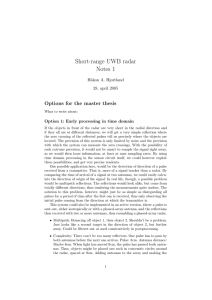
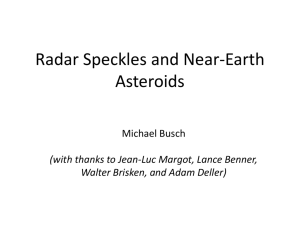
![EEE 443 Antennas for Wireless Communications (3) [S]](http://s3.studylib.net/store/data/008888255_1-6e942a081653d05c33fa53deefb4441a-300x300.png)

